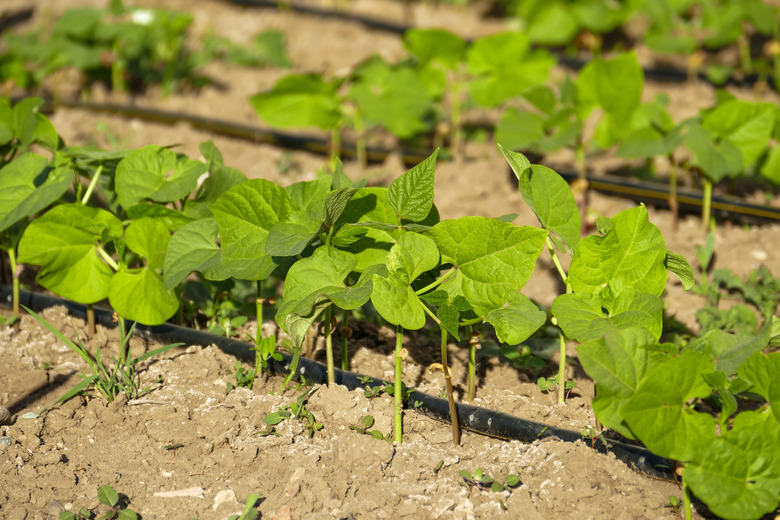Advantages And Disadvantages Of Irrigation Systems
We may receive a commission on purchases made from links.
Choosing the right kind of irrigation system for your lawn and garden affects the health of your plants and your pocketbook. Watering methods that complement terrain, plants, and gardening goals maximize plant productivity and minimize water usage and energy costs. Understanding the advantages and disadvantages of the three main types of irrigation can help you select the best watering system for your lawn and garden needs.
Consider Overhead Irrigation
Consider Overhead Irrigation
From watering cans to sprinklers, overhead watering systems enjoy wide popularity. Overhead irrigation rains down to cleanse and hydrate gardens and lawns. Easily installed and moved, versatile sprinklers often include programmable features to minimize labor. Overhead systems benefit any terrain, no matter how uneven or rough, and easily adjust to suit different areas.
Disadvantages include increased risk of plant disease due to wet foliage, although early morning watering reduces that risk. Also, winds often blow overhead sprays off target, wasting misdirected water and increasing evaporation. Runoff due to overwatering and nearby concrete can add to water loss.
Consider Surface Irrigation
Consider Surface Irrigation
Ancient farmers used surface irrigation, and many modern gardeners follow suit. Surface methods include flooding and furrow irrigation, as well as basins around trees and shrubs. Smooth, graded, gravity-driven slopes suit surface irrigation best. Advantages include low costs and minimal labor. A hose and a garden hoe are all it takes to have functioning furrows between vegetable rows. Water stays in the root zone, and foliage stays dry.
Drawbacks to surface irrigation include potential overwatering and wasteful runoff. If soil lacks proper sloping or doesn't absorb readily, water can't move through the garden. Standing water damages plants and reduces yields for edible crops.
Consider Drip Irrigation
Consider Drip Irrigation
Slow, controlled watering distinguishes drip irrigation systems, which deliver water directly to plants rather than areas. Properly managed drip systems boast over 90 percent efficiency, leading some municipalities to exempt them from water restrictions.
Drip irrigation keeps soil evenly moist, yet full of oxygen. With balance instead of fluctuations, roots flourish. Disadvantages are limited, but drip systems must be carefully managed and monitored. Too little water results in poor root development and plant stress. Also, tubing can be unattractive if left uncovered. Mulch remedies the aesthetics and improves efficiency.
Use Water-Wise Practices
Use Water-Wise Practices
Irrigation systems don't take the place of responsible water management. Even the best-designed systems waste water and money and kill plants if left unmanaged. Well-maintained irrigation should supplement natural rainfall. Periods of abnormally high or low precipitation call for human intervention to keep irrigation on course.
Both underwatering and overwatering lead to soil problems, root and turf diseases, nutritional deficiencies, and reduced plant yields. Monitoring, managing, and maintaining your chosen irrigation system increase savings, satisfaction, and success.
